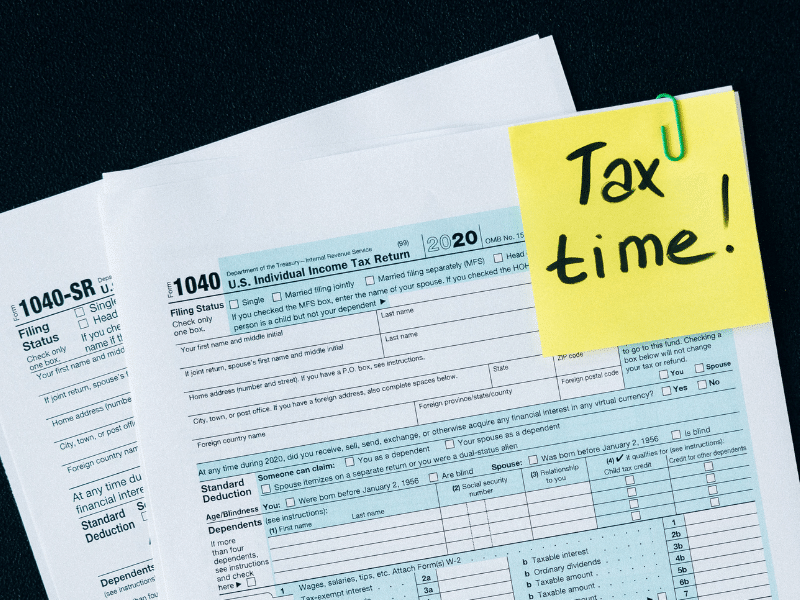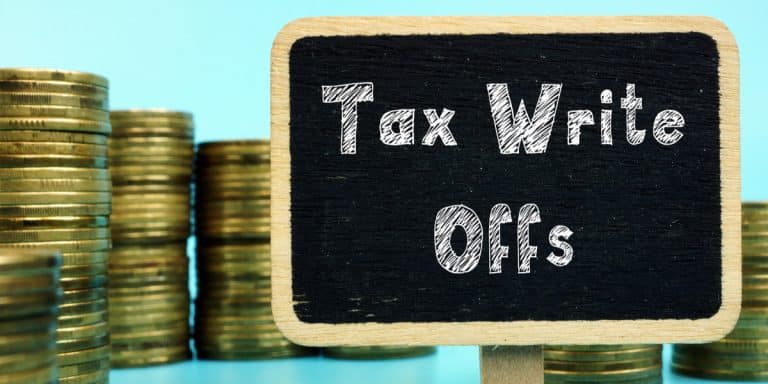If you check your tax return first, you might find that you missed a lot of tax write-offs. Those might just save you hundreds of dollars, perhaps even more! The IRS lists numerous expenses that you may declare as tax deductions. What’s more, the options you have will depend on your current civil status and several other factors.
Let us show you a few examples. If you have a small business, you may claim many of your bills as tax deductibles. As a classroom teacher, you may deduct the cost of school supplies from your tax returns. If you invest in stocks, you must pay two types of tax, and the rates change the longer you hold on to your assets.
There are so many other options available, though, so we will provide more details about each of them. Then, we will explain how you can declare these on your next tax return submission. Note that we will only give key information about these tax write-offs. Please consult with a certified tax preparer to make sure you’re filing the forms properly.
Why do countries have tax write-offs?

Tax breaks, tax write-offs, tax deductibles: chances are, your country has these options too. Since this is a US article, we will focus on the one from the United States.
Yet, have you ever wondered why we have ways of reducing the amount of taxes in the first place? Well, it’s one of the most basic powers of government called fiscal policy.
It often involves their ability to change how citizens pay taxes. In turn, they get to influence how the economy behaves. You’ll see this in action during the coronavirus pandemic.
Countries need to restart their economies. In other words, they need people to buy goods and services again. Money exchanges hands, allowing people to earn an income again.
As this cycle continues, people can restart businesses or start new ones. Those provide jobs to people. Eventually, the flow of money or the economy recovers, and the quality of life improves.
This takes longer if people spend it on too much taxes. That’s why 105 countries in 2020 implemented tax relief. In other words, they allowed citizens to pay taxes late.
This buys them time to get jobs or start businesses. The country gets the recovery now, and the debt payoffs later. Tax write-offs have another purpose, though.
Some countries use them to promote certain behaviors. For example, President Biden’s Infrastructure Bill focuses on renewable energy use in the US.
That’s why you can get tax incentives for buying hybrid cars. These federal tax credits can reach up to $7,500, based on what type of hybrid.
This can help convince more people to buy electric vehicles, and more people might even give up their old petrol vehicles. Eventually, this helps the Infrastructure Bill reach its goals.
What are the types of write-offs?

You’ll see the terms “tax exemptions,” “tax deductions,” and “tax credits” appear a lot in this article. That’s why we broke down their differences below:
- Exemptions – These are sources of money that are not included in your taxable income, and examples include some funds from your retirement plan and scholarships.
- Deductions – These are expenses that deduct the amount of taxable income, encouraging people to spend their money in certain ways. These expenses include charitable donations and interest from mortgages.
- Credits – They provide a dollar-for-dollar reduction of your tax liability or the amount you owe. There are two types: refundable and non-refundable. If the refundable credits exceed your liability, you may claim the remaining amount as a cash refund. On the other hand, you forfeit the remainder for non-refundable credits.
What are examples of tax write-offs?

The types available to you will depend on several factors. For example, a small business owner’s tax write-offs are different from someone without a company.
We will list some of the most popular ones below. Tax laws are complicated, though, so we will only give you the basics. Again, ask a professional for proper tax advice:
- Property taxes – You pay these if you have a boat, car, or home, and the IRS lets you deduct a total of $10,000 from it, or $5,000 if you’re filing separately from your spouse.
- Mortgage interest – This is meant to help more people buy a home. It reduces the taxable income from a homeowner’s federal income tax, and this deduction comes from how much mortgage interest they pay.
- IRA contributions – You may reduce the amount of tax you owe from an IRA. This depends if your spouse has a retirement plan and how much income you earn.
- Home interest – You may deduct the amount of interest you have gathered from building, buying, or improving a qualified home. You may include home improvement loans too.
- Medical expenses – As the name suggests, you could lower your adjusted gross income with your health care expenses. It’s only available if you’re filing itemized deductions though. For example, you may add out-of-pocket COVID expenses as tax write-offs, depending on certain factors.
- Teaching expenses – As a qualified teacher, you may reduce up to $250 of expenses connected to your job, such as books.
- Self-employed taxes – You might have a remote job nowadays due to COVID. If so, the amounts you paid for insurance and retirement may lower your taxes.
Note that there are more other tax incentives made available because of the coronavirus pandemic. For example, you may now apply for Child Tax Credits if you have children.
Visit the IRS website for more information about all these types of tax write-offs. Also, check the news to find out if there are changes made to these options.
Itemized and standard deductions

Most Americans use Form 1040 to declare taxes. They can choose how the form will compute how much they owe with two choices: itemized and standard deductions.
The former involved listing taxable items one by one. Let’s say you own a business. You will have to include every deductible business expense made with cash or credit cards.
You must add every amount and attach proofs for each. If you bought new office supplies, you should place how much you spent on them and include the receipts.
As you may have noticed, this will take a lot of time. You may spend less on taxes, though. If you don’t have the time for that, people in the 1940s agree with you.
This was when World War II ended. The countries involved spent a ton of money, so ordinary people had to pay income taxes first. They used itemized deductions, though.
Taxpayers had a hard time figuring out how much they owed. They used to sift through shoeboxes filled with receipts just to submit their returns!
This was when Congress implemented standard deductions. Instead of going through every expense, a person can just deal with a percentage of their income.
It might be easier, but it could cost you more in taxes. That’s why the two choices are still here. Of course, the rates have changed since then.
How do you claim tax write-offs?

Now that you know about the two types of deductions, it’s time to learn how to file them. Let’s start with the standard deduction. It’s a fixed amount based on your filing status.
- Single – $12,550
- Married, filing together – $25,100
- Married, filing separately – $12,550
- Head of their household – $18,650
These amounts increase if you’re over the age of 65 or you are blind. Now, let’s turn to the other type of tax deduction. You will have to include every income and tax write-off yourself.
Then, you have to compute how much you owe based on the deductions you could include. You must also provide proof that you qualify for them. Also, you need more forms for this.
Your choice between standard and itemized will depend on your preferred trade-off. Can you spare some time to reduce your taxes? Or would you rather finish it with one easy payment?
The itemized deductions might be worth it if they are lower than what you’d pay for the standard. You should choose carefully, or you might end up wasting time and money.
It might not be a good idea to do this alone. Instead, ask for help from a tax preparer, and they will make sure your taxes are computed properly, including all the write-offs.
You don’t have to go to their office either since most of them provide online services. Still, learn all you can about a tax preparation company before using its services.
Final thoughts
Pay your taxes on time to avoid getting tax bills and penalties. This will help you avoid hassles in the future. Also, this could make applying for credit harder.
Credit bureaus don’t count income taxes in credit ratings. Instead, you may get a tax lien from the IRS. Lenders check public records, so they may find it when you’re applying.
Once they do, they could use that as a basis to reject your application. Delay payments for much longer, and you may receive worse consequences!












